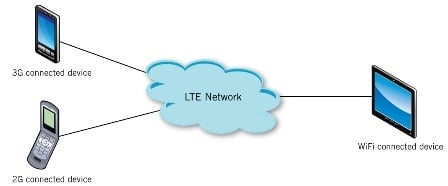
Last week, I wrote a blog about Diameter protocol and its application use cases. Since LTE uses it as a signaling protocol, operators have a need to interwork Diameter with the signaling technologies used in other mobile networks. This has given rise to the Diameter Interworking Gateway function, which moved onto the center stage at Mobile World Congress this year. It’s a critical element to enable the successful rollout of LTE and a seamless user experience across different networks.
Let’s take a look at some of the key use cases:
- Legacy network interworking. Signaling conversion from Diameter to SS7/MAP includes scenarios such as roaming between LTE and 2G/3G networks, security hand-off and home location register subscriber authentication. Since LTE will only account for 10 percent of all access networks by 2017, this roaming use case will be critical for LTE-legacy network interoperability.
- Wi-Fi interworking. Wi-Fi interworking requires signaling conversion from RADIUS to Diameter to connect the Wi-Fi network to the carrier’s central traffic management and charging systems. This allows carriers to offer subscriptions that combine mobile and Wi-Fi connectivity into a single bundle.
- IT interworking. This requires connecting the new Diameter-based systems, such as a PCRF or a Diameter signaling controller, to either SOAP or XML/HTTP, so IT information systems such as customer relationship management (CRM) and subscriber databases can be used for policy and routing decisions.
- LTE to IMS interworking. On the surface, both LTE and IMS use Diameter, so why would interworking between these be required? In the VoIP world, just because SIP is on one device doesn’t mean it talks to another SIP device automatically. Different SIP versions might be used, or the vendors might have interpreted the specs in a slightly different way. Both of these scenarios result in poor interworking. It will be the same story for Diameter, and I understand there are close to 70 different variants of Diameter alone right now.
What’s your LTE rollout challenge?








